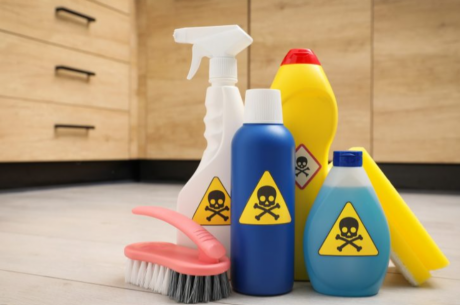Welcome to our blog, where we delve into the intricate world of restoration and the challenges it entails. Today, we’re turning our attention to a topic that often hides in the shadows but poses significant risks: hoarding.
As restoration professionals, we’ve encountered firsthand the dangers lurking within hoarded environments. From fire hazards to health risks, the consequences of hoarding extend far beyond cluttered spaces. Join us as we uncover the hidden dangers of hoarding and explore the vital role restoration plays in mitigating these risks.
What is Hoarding?
Hoarding is more than just clutter; it’s a complex psychological disorder characterized by an overwhelming urge to acquire and keep excessive amounts of possessions, regardless of their value or usefulness. People who hoard typically have difficulty parting with items, leading to the accumulation of vast quantities of belongings that eventually overwhelm living spaces. This compulsive behavior often results in cluttered and chaotic environments, making it challenging to navigate and maintain a safe living space.
Hoarding can manifest in various forms, including the accumulation of newspapers, books, clothing, household items, or even animals. It’s essential to understand that hoarding goes beyond mere disorganization or messiness. It’s a deeply ingrained pattern of behavior driven by underlying emotional and psychological factors.
Individuals who hoard may experience intense anxiety or distress at the thought of discarding possessions, fearing they might need them in the future or experiencing a strong emotional attachment to the items. As a result, they often resist attempts by others to clean or organize their living spaces, leading to further isolation and deterioration of their quality of life.
Hoarding disorder can have profound implications for both the individual and their surrounding environment. It can jeopardize physical health and safety, strain relationships with family and friends, and significantly impair daily functioning. Recognizing the signs of hoarding and understanding its complexities are crucial steps in addressing this challenging issue effectively.
Causes of hoarding disorder
Hoarding disorder is a complex condition influenced by a combination of genetic, environmental, and psychological factors. While the precise causes remain the subject of ongoing research, several key factors have been identified:
Genetics: There is evidence to suggest that hoarding disorder may have a genetic component. Studies have shown that individuals with a family history of hoarding are more likely to develop the disorder themselves, indicating a possible genetic predisposition.
Brain Abnormalities: Research using brain imaging techniques has revealed differences in brain structure and function among individuals with hoarding disorder. These abnormalities, particularly in areas of the brain involved in decision-making, memory, and emotional processing, may contribute to the development and persistence of hoarding behaviors.
Trauma and Stress: Traumatic life events or significant stressors, such as loss, abuse, or financial difficulties, can trigger or exacerbate hoarding behaviors. For some individuals, hoarding may serve as a coping mechanism to alleviate distress or regain a sense of control in the face of overwhelming emotions.
Environmental Factors: Growing up in a cluttered or chaotic environment, or experiencing parental hoarding behaviors, can increase the likelihood of developing hoarding disorder later in life. Environmental factors, such as social norms regarding possessions and consumer culture, can also influence hoarding behavior.
Psychological Factors: Hoarding disorder is often associated with underlying psychological conditions, such as obsessive-compulsive disorder (OCD), depression, anxiety disorders, or attention-deficit/hyperactivity disorder (ADHD). Hoarding may serve as a way of managing or alleviating symptoms of these co-occurring disorders.
Attachment and Beliefs About Possessions: Some individuals develop strong emotional attachments to their possessions, viewing them as extensions of themselves or sources of comfort and security. Beliefs about the value of possessions, fear of waste, or the desire to avoid making decisions about discarding items can contribute to hoarding behaviors.
Dangers of hoarding
The dangers of hoarding extend far beyond cluttered living spaces; they encompass a range of risks that can impact both physical and mental well-being. Here are some of the significant dangers associated with hoarding:
Fire Hazards: Hoarded items, especially combustible materials such as paper, clothing, or chemicals, significantly increase the risk of fire. Cluttered spaces make it difficult to access exits and hinder firefighters’ efforts to extinguish flames, putting occupants and first responders at greater risk of injury or death.
Health Risks: Hoarding environments provide ideal breeding grounds for mold, bacteria, pests, and other harmful pathogens. Accumulated debris can trap moisture, leading to mold growth, which can trigger respiratory problems and exacerbate allergies and asthma. Piles of clutter also attract rodents, insects, and other pests, posing health hazards and increasing the risk of disease transmission.
Structural Damage: The weight of hoarded items can exert significant pressure on floors, walls, and ceilings, leading to structural instability and damage to the property. Over time, this strain can weaken the building’s foundation, compromise its integrity, and increase the likelihood of collapses or other structural failures.
Tripping and Falling Hazards: Cluttered pathways and unstable piles of belongings create tripping and falling hazards, particularly for elderly individuals or those with mobility issues. Falls can result in serious injuries, such as fractures, sprains, or head trauma, further exacerbating health complications and reducing quality of life.
Social Isolation: Hoarding often leads to social withdrawal and isolation as individuals feel embarrassed or ashamed to invite others into their homes. This isolation can perpetuate the hoarding behavior and exacerbate feelings of loneliness, depression, and anxiety, further hindering the individual’s ability to seek help or support.
Legal and Financial Consequences: Hoarding can result in legal and financial repercussions, such as code violations, eviction, or foreclosure. Local authorities may intervene if hoarding poses a public health or safety risk, leading to fines, penalties, or legal action. Additionally, the cost of remediation and restoration for severely hoarded properties can be exorbitant, further exacerbating financial strain.
Emotional Distress: Living in a cluttered and chaotic environment can cause significant emotional distress and impairment in daily functioning. Individuals may feel overwhelmed, helpless, or trapped by their hoarding behaviors, leading to feelings of shame, guilt, and low self-esteem. The emotional toll of hoarding can strain relationships with family and friends and contribute to a cycle of avoidance and isolation.
Contact PuroClean of Bullshead for Professional Hoarding Cleanup in New York – (347) 501-6155
At PuroClean of Bullshead, you can trust our expertise and resources to make your hoarding cleanup a successful endeavor. Our top priority is restoring safety and peace of mind to homes affected by hoarding. Our team of experts has the training, experience, and equipment to properly clean a house affected by hoarding without causing any further loss.

Hoarding Cleanup Procedure
Hoarding cleanup is a specialized and often challenging process that requires careful planning, expertise, and sensitivity to the needs of individuals affected by hoarding disorder. Here’s a general outline of the hoarding cleanup procedure:
Assessment and Planning:
- Conduct a thorough assessment of the hoarded environment to evaluate the extent of clutter, safety hazards, and potential health risks.
- Develop a comprehensive cleanup plan tailored to the specific needs and preferences of the individual, taking into account any underlying mental health conditions or sensitivities.
- Identify priority areas for cleanup and establish clear goals and objectives for the process.
Safety Precautions:
- Prioritize safety by ensuring that all cleanup personnel are adequately trained and equipped with appropriate personal protective equipment (PPE), including masks, gloves, and protective clothing.
- Take measures to address potential safety hazards, such as securing unstable piles of belongings, removing tripping and falling hazards, and implementing protocols for handling hazardous materials.
Sorting and Organizing:
- Begin the cleanup process by sorting through hoarded items, categorizing them into designated areas based on their condition, value, and potential for salvage or disposal.
- Use a systematic approach, such as the “keep, donate, discard” method, to help individuals make informed decisions about which items to retain and which to remove.
- Provide emotional support and guidance to help individuals navigate the sorting process and cope with any feelings of anxiety or distress that may arise.
Cleaning and Sanitizing:
Clean and disinfect the hoarded environment thoroughly, paying particular attention to areas prone to mold, bacteria, and pests.
Use appropriate cleaning products and techniques to remove accumulated debris, stains, and odors, restoring the space to a safe and habitable condition.
Address any structural damage or deterioration caused by hoarding, such as repairing walls, floors, or plumbing systems as needed.
Disposal and Waste Management:
- Coordinate the proper disposal of discarded items, adhering to local regulations and environmental guidelines for waste management.
- Arrange for the removal of bulk items, hazardous materials, and electronic waste through licensed disposal services or recycling facilities.
- Minimize environmental impact by prioritizing recycling, donation, and responsible disposal practices wherever possible.
Follow-Up and Support:
- Provide ongoing support and resources to help individuals maintain a clutter-free environment and prevent relapse into hoarding behaviors.
- Offer referrals to mental health professionals, support groups, or community resources for continued assistance with managing hoarding disorder and addressing underlying psychological issues.
- Conduct regular follow-up visits to monitor progress, address any remaining concerns, and provide additional support as needed.
What diseases are caused by hoarding?
Hoarding can contribute to various health hazards, including respiratory issues, allergies, infections, and mental health disorders. Mold, bacteria, and pests thriving in cluttered environments can trigger or exacerbate respiratory conditions like asthma and allergies. Additionally, the accumulation of debris may increase the risk of falls, injuries, and infections. Furthermore, the stress and anxiety associated with hoarding can negatively impact mental health, leading to depression, anxiety disorders, and other psychological issues.
Is hoarding genetic?
While the exact causes of hoarding disorder are not fully understood, research suggests that genetic factors may play a role in its development. Studies have shown that individuals with a family history of hoarding disorder are more likely to develop the condition themselves, indicating a possible genetic predisposition. However, hoarding disorder is complex and influenced by a combination of genetic, environmental, and psychological factors.
Why are most hoarders female?
It’s a common misconception that most hoarders are female. Research suggests that hoarding disorder affects both men and women, although it may manifest differently based on gender and cultural factors. While some studies have found a slightly higher prevalence of hoarding disorder among women, others have reported comparable rates between genders. It’s essential to recognize that hoarding disorder can affect individuals of any gender, age, socioeconomic background, or cultural identity. The reasons behind any gender disparities in hoarding prevalence remain the subject of ongoing research and debate.



